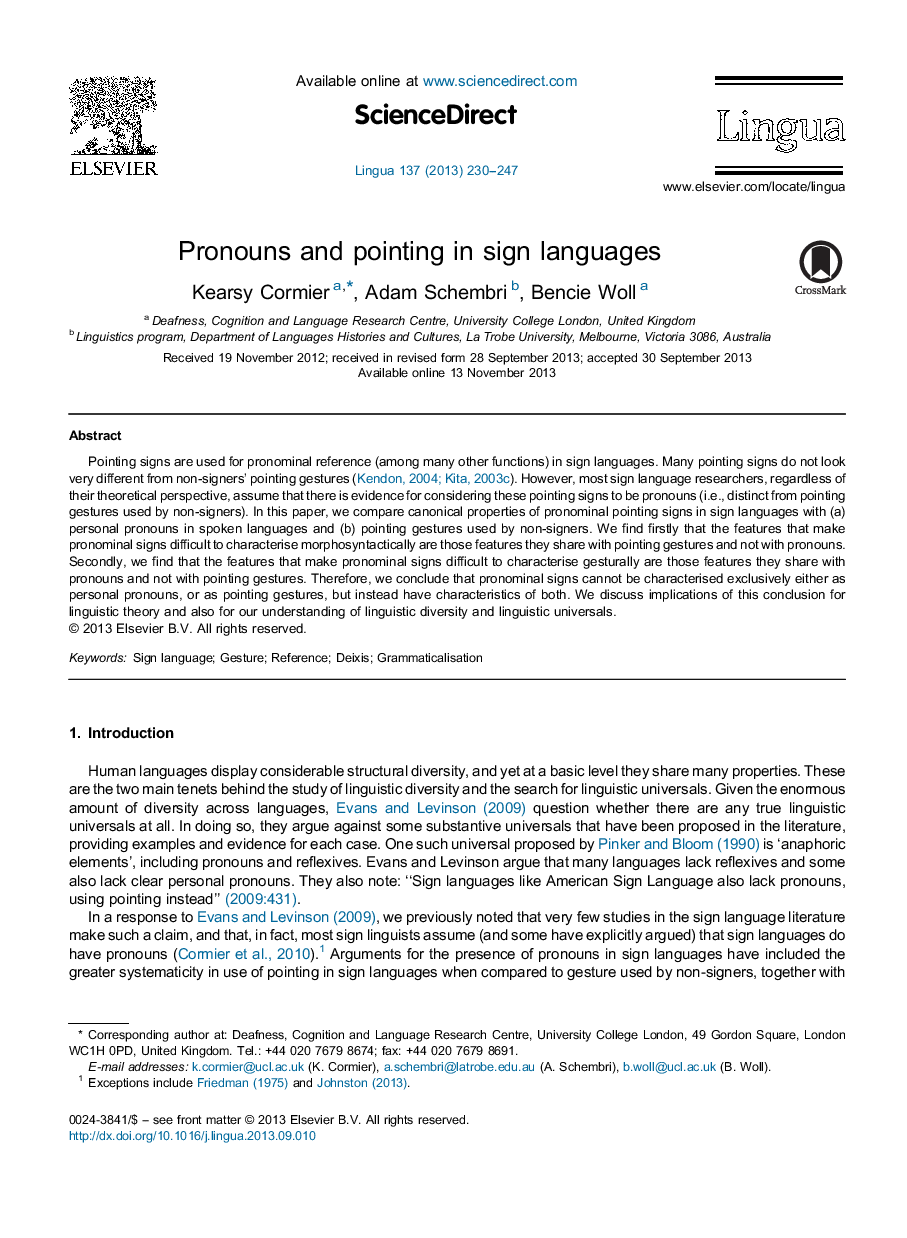| Article ID | Journal | Published Year | Pages | File Type |
|---|---|---|---|---|
| 7298624 | Lingua | 2013 | 18 Pages |
Abstract
Pointing signs are used for pronominal reference (among many other functions) in sign languages. Many pointing signs do not look very different from non-signers' pointing gestures (Kendon, 2004, Kita, 2003c). However, most sign language researchers, regardless of their theoretical perspective, assume that there is evidence for considering these pointing signs to be pronouns (i.e., distinct from pointing gestures used by non-signers). In this paper, we compare canonical properties of pronominal pointing signs in sign languages with (a) personal pronouns in spoken languages and (b) pointing gestures used by non-signers. We find firstly that the features that make pronominal signs difficult to characterise morphosyntactically are those features they share with pointing gestures and not with pronouns. Secondly, we find that the features that make pronominal signs difficult to characterise gesturally are those features they share with pronouns and not with pointing gestures. Therefore, we conclude that pronominal signs cannot be characterised exclusively either as personal pronouns, or as pointing gestures, but instead have characteristics of both. We discuss implications of this conclusion for linguistic theory and also for our understanding of linguistic diversity and linguistic universals.
Related Topics
Social Sciences and Humanities
Arts and Humanities
Language and Linguistics
Authors
Kearsy Cormier, Adam Schembri, Bencie Woll,
